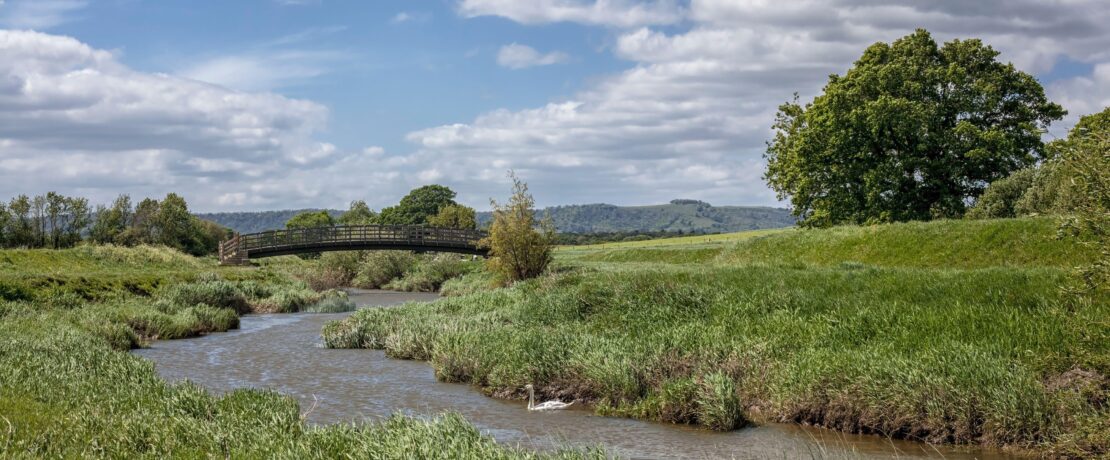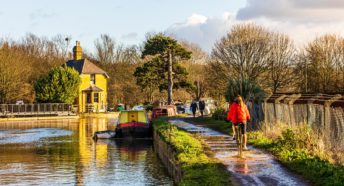Troubled waters: taking action on England’s rivers
Biologist and naturalist Amy-Jane Beer explores some of the work that local CPRE groups are doing to protect and restore England’s rivers, lakes and seas.
The art and literature of England is braided with rivers. Think of the shimmering Thames in Kenneth Grahame’s The Wind in The Willows; Rupert Brooke’s beloved Granta; the Stour, as painted time and again by Constable. Perhaps the most important celebrant of the River Wye was William Gilpin, whose art and writings challenged the prevailing view of Britain’s wilder landscapes. Where others saw grimness and jeopardy, Gilpin saw beauty and splendour.
Waterways under threat
Fast forward to 2023 and these once-celebrated flows, teeming with life, seem like a distant dream. While the most polluting practices of the industrial revolution are over, intensive agriculture, ever-increasing consumption and a privatised water industry have all been disastrous for our rivers. Headlines about pollution and dwindling flows are an almost-daily occurrence.
By the Environment Agency’s own metrics, not a single English river merits ‘good’ chemical and ecological status. As Libby Alexander, founder of the Save Our South Coast Alliance – of which CPRE Sussex is an affiliate member – bluntly puts it: ‘The UK has the most polluted seas and rivers across Europe, and also the most depleted wildlife. This needs to change.’
Meanwhile, the escalating climate emergency is set to bring increasing pressures on water supplies as well as more intense storms. The end result is more flooding and increasing run-off, which overwhelms our inadequate and ageing sewage systems. But while policy-makers are cagey and regulators fail, rivers have advocates among a host of local and grassroots organisations. In fact, it’s largely due to the tireless work of volunteers that the problems facing our waters have become so visible. Many CPRE local groups are in the vanguard of this grassroots guardianship.
Helping Hampshire’s waterways
After retiring to Hampshire’s beautiful Test Valley in 2021, Nick Walton rejoices in having one of England’s most celebrated chalk rivers just half a mile from his door. But as a former environmental hydrogeologist, he is more aware than most that all is not well.
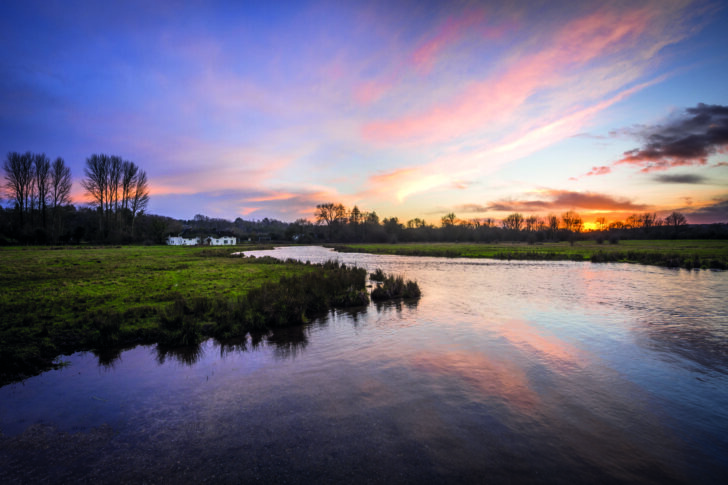
‘Pretty much all of Hampshire’s water comes from one enormous chalk sponge – via the chalk rivers that flow from it or boreholes we’ve drilled into,’ he says. ‘But we’re running short.’
‘This puts the county on the frontline of a problem that will soon affect us all,’ says Nick, who advises CPRE Hampshire’s Test Valley district group on water issues. ‘It’s hard to imagine our world decades ago, but we know for sure that we’re going to need to manage our water better. There are three aspects to this: conservation of water, distribution of water and finding new sources of water.’
Conservation is perhaps the easiest. ‘There are some no-brainer actions,’ says Nick. ‘We have to stop flushing 25% of our pristine, expensively treated drinking water down the toilet. We can all help with that, by flushing less often. We could massively reduce usage with a simple message, “If it’s yellow let it mellow, if it’s brown flush it down”.
‘But it shouldn’t all be on the consumer. Huge savings could be made at local and national government level by changing policies and planning requirements. The water drained from one bath a day could, if reused, flush the toilet for one person per day. It’s difficult and expensive to retrofit greywater recycling systems, but easy in a new build, so building regulations should be changed to require this as standard.’
Joined-up thinking on water
Nick is encouraged to see water resource management plans starting to show more joined-up thinking when it comes to sharing water. ‘We’ve been used to thinking of water as a local resource because it’s not easy to transport. But the fact is, the south east is becoming desperately short of water, while, arguably, the north west has too much. It’s vital that we distribute this national resource better.’
Moving water is challenging in a variety of ways. It’s also politically delicate, not least because it often involves massive infrastructure projects. Large pipelines aren’t really the solution – they can be destructive and wouldn’t easily handle the quantities needed, says Nick, while plans for regional transfers using rivers or canals may be more realistic. ‘The role for CPRE in this is to be a critical friend to plans as they develop, and call on local councils to take water and sewage issues more seriously.’
Finally, there’s the idea of ‘new water’. Where might that come from? ‘We have only two choices,’ says Nick. ‘Either recycle sewage water or desalinate (remove salt from) seawater, and there are pros and cons to each. The former is a bit cheaper and uses less energy, but is still a limited resource. Although the financial and energy costs and carbon footprint of desalination are coming down, and the resource is much greater, we’re still not there yet. But, sooner or later, that’s where we in the water-stressed south east need to go.’
Standing up for Sussex
Dr Roger Smith is a trustee of CPRE Sussex who devotes extraordinary energy to calling local and national government to account on planning issues. In particular, he focuses on impacts on people, water quality and wider nature. Having worked and travelled in many parts of the world, and with experience gained as a conservation officer in this country, he is well placed to take a long view on what’s happening in Sussex.
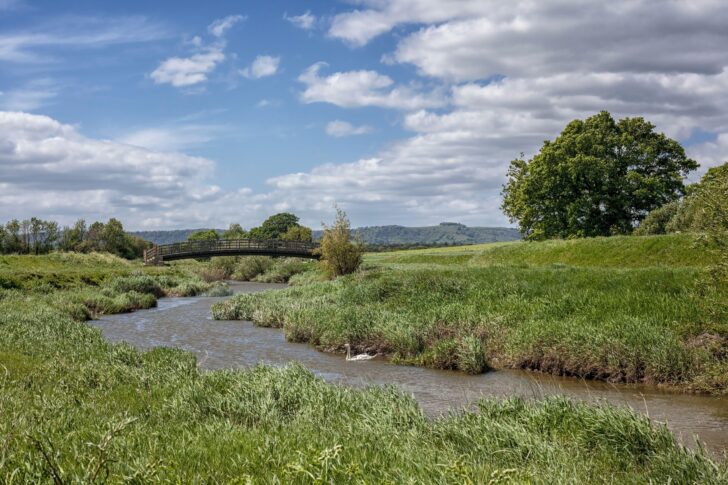
Roger cites a recent controversial application for a development of 1,500 houses, which CPRE Sussex believes will put at risk the work of the River Adur Restoration Project. ‘The local wastewater treatment works, which would treat sewage and foul water from the new development, already releases considerable storm overflows into a tributary of the River Adur. Any additional foul water, especially in huge quantities, would surely worsen the area’s poor ecological status.’
Infrastructure under pressure
The current system, says Roger, fails to consider where water will come from to supply very large developments, or where effluent will go. ‘There’s an urgent need for joined-up thinking that considers the combined impact of sewage discharge and factors this into development plans. Currently, there’s no requirement for water companies to appear at the hearing of a local plan, or be questioned in the context of a planning decision, even when the applications are for hundreds of houses. Given the problem of effluent in our rivers and inshore waters, that’s an extraordinary, bizarre and outrageous omission.’
From planning, Roger’s interest has expanded to cover different aspects of government policy and, in particular, the way it impacts on the natural world and the future of our countryside. In August 2022 an amendment was passed in the Commons which effectively legalised sewage dumping, provided that water companies could show it was an unspecified amount less than the previous year. In December targets originally set under EU legislation to clean up water pollution were set back 36 years, from 2027 to 2063. A host of other protective laws are likely to go under the pending Retained EU Law (Revocation and Reform) Bill. Roger wonders how many MPs even understand what they are voting for.
Sussex beaches such as Bexhill, Bognor Regis East, Felpham, Littlehampton, Lancing and Worthing have been repeatedly placed off-limits to swimmers over the past year due to storm sewage discharges. CPRE Sussex will continue to keep up pressure on planning authorities, water companies and the government to protect the area’s waterways and coasts, while delivering sustainable supplies of clean drinking water.
Championing the Wye
Andrew McRobb has been campaigning with CPRE Herefordshire since 2012, and his main concern is the state of his local river, the Wye. With echoes of William Gilpin, he describes a canoe trip at dawn, soon after moving to the area: ‘There was mist on the water, so many birds, salmon leaping… it was just unbelievable.’
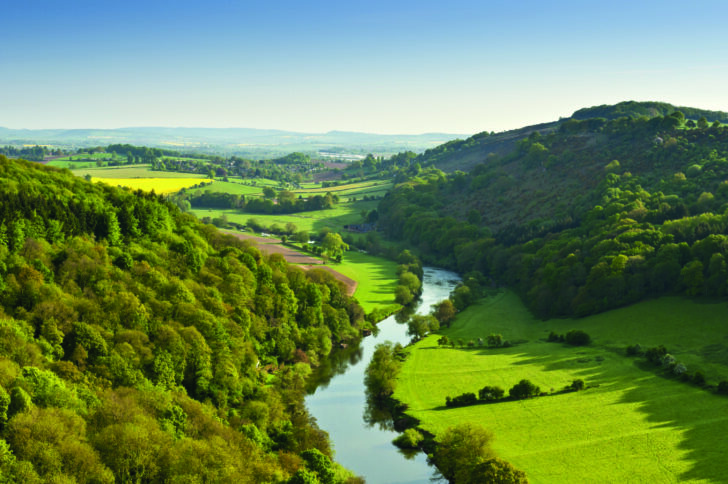
Since that trip, however, Andrew has witnessed a heartbreaking decline in the condition of the Wye, which now suffers annual algal blooms and massive die-offs of fish. In summer, its water is soupy green and smelly, and its once-clean bed is slippery with brown slime.
The cause, Andrew says, is clear. ‘There’s a lot of national concern, quite rightly, about sewage, but at least 70% of river pollution in the Wye comes from agriculture and, in particular, manure from chicken farms. There are now 20 million chickens in Herefordshire at any one time, and one chicken shed might contain 90,000 birds, whose growth is so fast-tracked that their waste output is equivalent to that of Ross-on-Wye, a town of over 10,000 people.’
This waste is spread on fields as fertiliser – which could be sensible, if there wasn’t so much of it. Phosphate and phosphorous are particularly problematic. Phosphate is highly soluble, and enters the water system easily, while non-soluble phosphorous is added to the soils there at a rate of around 3,000 tonnes a year, over and above what the crops need.
A Nutrient Management Board was set up in 2014 to address the problem. But it seemed to Andrew that nothing was happening. ‘When I asked why they had made so little progress, the answer was, “We haven’t got enough data.” So I said I’d get it.’
Local water heroes
A citizen science project was born, involving CPRE Herefordshire, Friends of the Upper Wye and The Wye and Usk Foundation. The project was supported by the Environment Agency and Cardiff University. ‘I thought we might get 50 volunteers trained up,’ says Andrew. ‘But soon we had 500!’
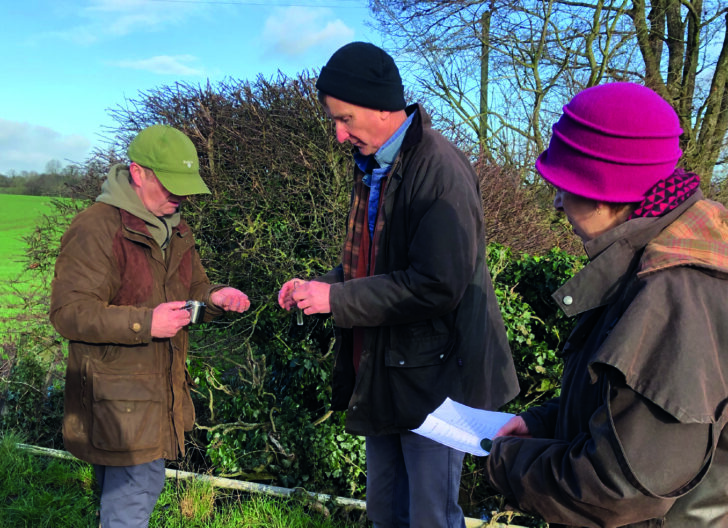
Managing, registering, training and equipping this team, not to mention risk-assessing sampling sites and raising funds to pay for it all, now take up much of Andrew’s time. But the results present a compelling case for action from the regulator, from planners, from farmers and from the corporate giants that buy and sell most of the region’s poultry.
It’s a case CPRE Herefordshire is determined to make. Last year its citizen scientists joined their allies to issue an SOS on behalf of the Wye, calling on the English and Welsh governments to take meaningful action to prevent further damage to it.
‘Of course, the regulatory failures are frustrating,’ says Andrew. ‘Some days my thoughts really aren’t printable – but if we don’t do it, no one will.’
There’s weariness in Andrew’s voice, but pride, too. The arteries of England belong to us all. We can all play a part, and it starts with getting to know your local waters. People who care for rivers often come to think like them: relentless, cumulative, shape-shifting and capable of changing the course of history.
About the author
Dr Amy-Jane Beer is a biologist, naturalist and writer who has contributed to more than 40 books on natural history. Her latest book The Flow: Rivers, Water and Wildness (Bloomsbury) is out now.
Find out more about the local groups in this article by visiting the CPRE Hampshire, Sussex and Herefordshire websites.
A version of this article was originally published in CPRE’s award-winning magazine, Countryside Voices. You’ll receive this as well as access to other benefits including discounts on attraction visits and countryside kit from major high street stores when you join as a CPRE member. Join us now.
